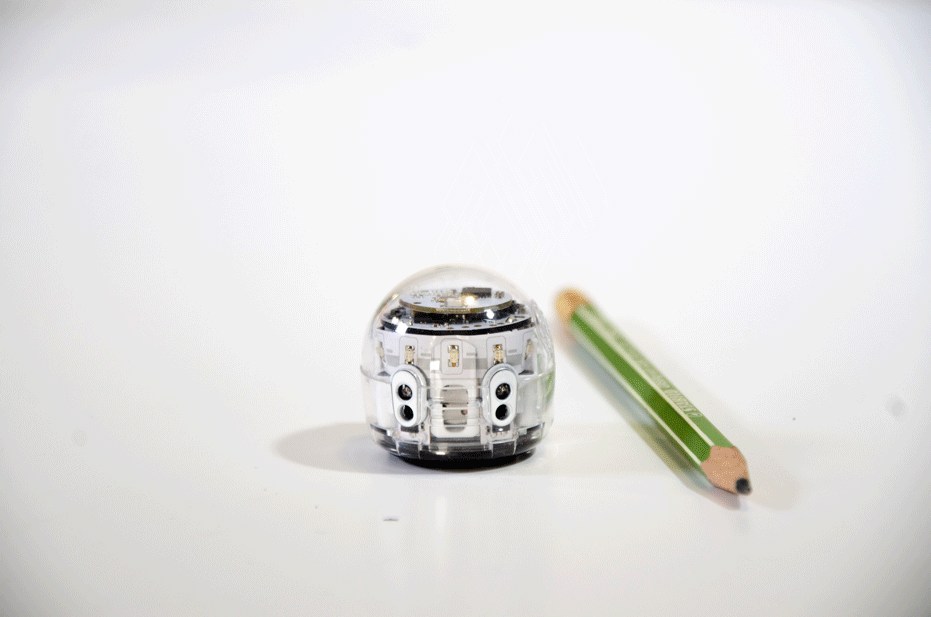Ozobot Evo is a tiny robot with big potential. You can program your miniature robot to perform complex maneuvers, or just put it in your pocket.
At first glance, Ozobots may remind you of toys. But don’t judge this robot by its size. Advertised to schools and parents alike, Ozobots are educational tools capable of entertaining and teaching both beginner and advanced coding enthusiasts… if used correctly.
What are Color Codes?
Can you use Ozobots screen-free?
How to use Evo in school? Is it teacher-friendly?
In this article, we will answer all these questions and more. Read on or jump straight to the section that interests you the most.
Find out more about Ozobot Evo functions, possibilities and known problems. By the end you will be able to make an informed decision: is it the right robot for you?
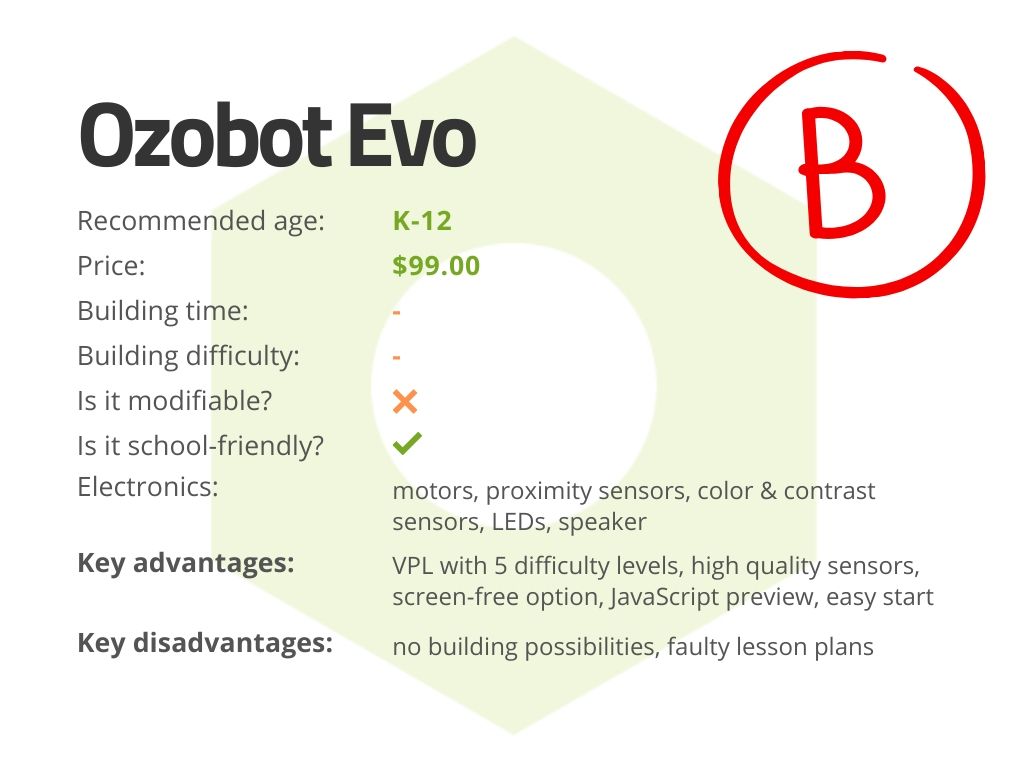
Construction¶
For an educational robot, Ozobot Evo makes an almost underwhelming first impression. It could be described as
“a pocket-size, round gadget with see-through casing and some electronics”,
as one of my colleagues put it. But one look is not enough to judge this robot.
Let’s start with its most apparent quality - the extra small size. Ozobots are the lightweight champions of educational robotics, which can either impress or alarm you (especially if you teach in kindergarten). On one hand, their storage is not a problem, because a set of 10 Ozobots for an entire class will easily fit into a drawer of your teacher’s desk.
On the other hand, this size comes with a limited detection field of sensors and a lower battery capacity. If you want to keep your Ozobot Evo constantly connected via Bluetooth, the battery will last only around 40 minutes (we checked several times) and then, you will need exactly 1 hour to fully charge it. However, it’s possible to stretch this time significantly for school use. More on that in Programming.
It’s also worth mentioning that the design of Ozobot Evo is user-friendly. You can use it right after unpacking, by pressing a button and placing the robot on a drawn line, thus immediately starting to play with Color Codes.
What’s really impressive is the number and the high quality of electronics inside. Ozobot Evo has 2 separately propelled motors, 4 proximity sensors, contrast and color sensors underneath, 6 LEDs and a speaker, all programmable and packed into one little robot.
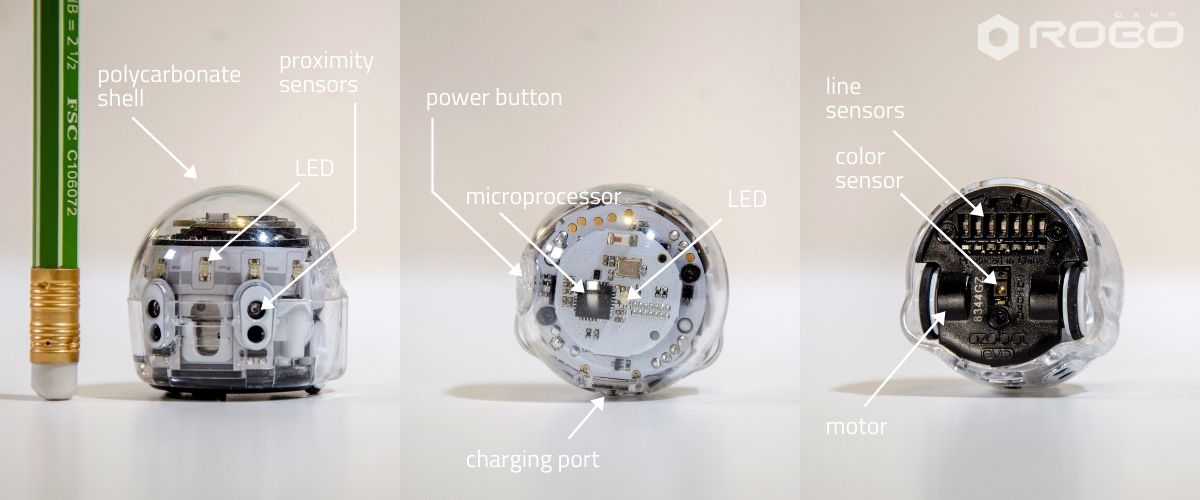
All electronics operate seamlessly, which is very important for a learning tool. The only shortcoming we noticed concerns the proximity sensors. They have a limited detection range, oscillating at 1,5 to 6 cm, and are positioned at an angle, which restrains their use in the long run. Nonetheless, equipping an educational robot with such high-quality sensors deserves applause.
Since we love assembling robots, and we know that kids love it too, no option to alter the construction is a big drawback for us. It simply hampers creativity.
There are some half-measures available, like the officially produced extensions for non-school use (Construction Kit), or creating custom attachments with paper and scissors to expand the possibilities of Ozobot. The second option is tricky, because you may accidentally cover some sensors.
Our team decided to experiment with it and has already prepared for you some templates to print, cut out and attach to your Ozobot. Or watch it in action below.
Programming¶
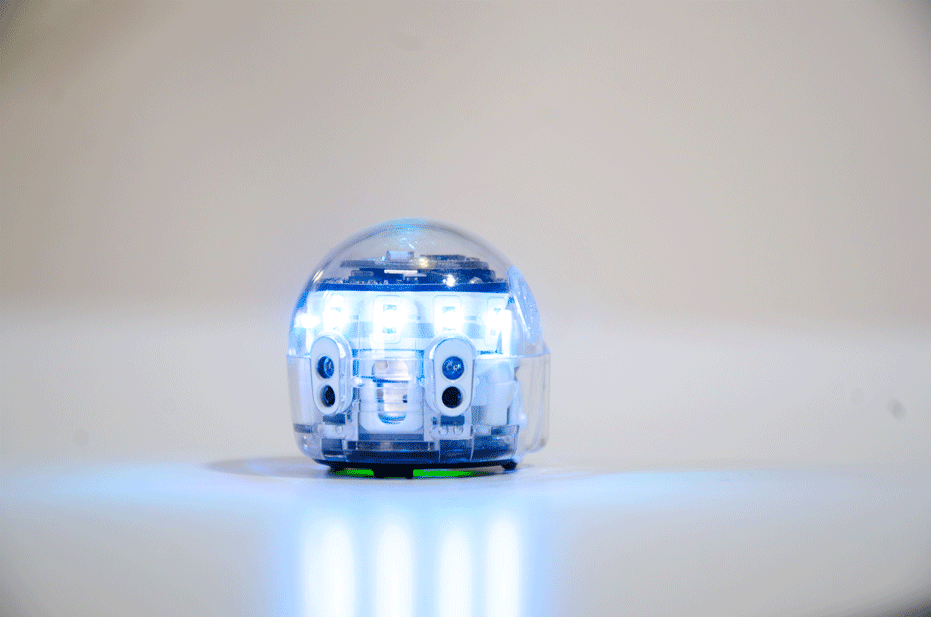
Robots to code, create and connect with
According to the producer, the most important objective of this robot is to encourage learning how to code. No doubt, Ozobot has considerable programming potential, since it can be coded in several languages, on several difficulty levels, with and without screen.
But let’s not be too hasty to pass judgement. After all, despite such grand possibilities, Ozobots are not recognized as the universal solution to learning programming. Why not?
Color Codes: Screen-free introduction to coding¶
No matter how and when you learned about the existence of Ozobots, the chances are you saw them in the context of Color Codes, i.e. lines with colored fragments drawn in a specific order. Depending on the color sequence recognized by its color sensor, Ozobot executes a certain action and... that’s it.
This straightforward feature is certainly useful in the early stages of learning, because it allows pupils to practice basic concepts related to programming screen-free.
Another practical use for it is to introduce the starting level of problem-solving. For example, you can print out or draw “crossroads” for Ozobot (i.e. crossing black lines) and leave a white space right in front of it, so that your students decide where the robot should go next.
Playing with colorful pens and robots that follow a line is certainly fun, but there’s a limit to how much such classes can actually teach.
One downside to Color Codes screen-free is that using them with pens and paper can be quite messy, especially if children haven’t got much patience and simply cannot wait for the ink to dry out.
But the greater problem of Color Codes is how prominently they are used to promote the product. Even though this feature is no more than a snippet of the potential that Ozobot could have as a learning tool, it is widely seen as the main functionality (and by teachers, too!) used to teach coding. It’s a shame, really.
Skip to the next part on Ozoblockly to read all about the hidden coding possibilities of Ozobot Evo.
Evo App: Gamified homeschooling¶
Every Evo can be connected to a free app for smartphones and tablets - Evo by Ozobot. Once you connect your robot via Bluetooth, you can use this app to check its settings and features, play with remote control, learn how to use Color Codes, or discover activities proposed by the producer. You can also share your personal projects with other app users.
Programming Ozobots with coding blocks is reserved for Ozoblockly. Jump forward to learn more about it.
Evo by Ozobot is based on a gamification system, which awards you points for completing simple tasks. It is a good solution for kids at home who want to discover the potential of Evo on their own and need a little nudge to press on. The app helps to familiarize themselves with the robot and its functions, before they venture into the world of (almost) boundless coding possibilities. You will make the best of this app by using it at home.
By the way, if you are new to educational robots at home, read this guide on how to make homeschool robotics work.
Nonetheless, if you want to try it out in school, we won’t stop you. But mind the time! When the robot is constantly connected to the app, the power drains very quickly. During our tests, the battery usually ran out in around 40 minutes.
Pro Tip: Battery lasts much longer, if you use Ozobot just to perform the program. It’s easy to achieve by loading the program directly from Ozoblockly.
Rating of Evo by Ozobot ranges between 3.7 in App Store and 4.1 in Google Play. Some users experience obstinate bugs, which either immediately crash the app, or make it impossible to establish connection. During our tests, we had problems with the Voice and Sounds tab, which was removed in the most recent update.
On the other hand, people who can make the app work find it very enjoyable. So go ahead and try it out yourself, it’s free!
Ozoblockly: From coding blocks to JavaScript¶
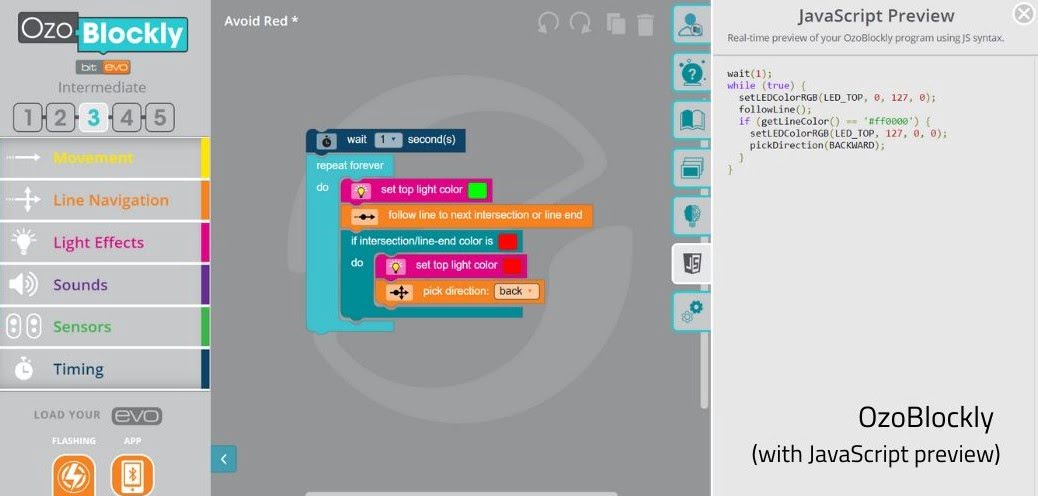
Ozoblockly is a browser-based programming app for Bit and Evo robots that is free to use, well-developed, extensive and user-friendly. It works on laptops and tablets.
The shining jewel in the crown of the Ozobot family has five difficulty modes and gives plenty of robot coding possibilities, especially for the most advanced learners. Abundance, however, is not always the best teacher.
Let’s start from the beginning, or rather, the Pre-Reader (1) mode. As the name suggests, this level requires very little from the user, i.e. counting from 1 to 10. Everything else is presented in pictographic form. At this level, you can program the robot to go forward, turn, use premade light and sound effects, or even wait for a couple of seconds.
The next mode, Beginner (2), introduces loops and changes the appearance of the programming blocks by including more text and less pictures. But the fun really begins in Intermediate (3) mode. You can start using proximity sensors installed on your robot and conditional statements, which give you a taste of what’s yet to come.
Pro Tip: When using Ozoblockly in school, pay special attention to the mode you and your students are currently on. Coding blocks from different modes can be used in one program, which is useful for an individual learner, but can swiftly provoke confusion and disorder in a classroom.
Switching to Advanced (4) mode is a big leap forward. Most icons disappear. Suddenly, it becomes possible to use highly customizable logic blocks, to create variables and functions. This level is for students who already know what a random integer is, how degrees define angles and how many milliseconds are in a second.
Lastly, the Master (5) mode. Plenty of programming possibilities, which can be deciphered only by users who have a sufficient amount of knowledge on programming and mathematics. New options include creating lists, arrays and programming the Ozobot’s button.
And that’s not the end of coding prospects. Every program you create in Ozoblockly can be previewed in JavaScript, simply by opening a dedicated tab on the right side. It’s an amazing opportunity to transform what kids learn at school into a real-life skill. And perhaps spark their interest learning JavaScript? You won’t regret using it!
Difficulty modes aside, Ozoblockly has several features that work well in school learning. Thanks to its original program upload method (i.e. placing the robot against the screen for a few seconds), several students can share one screen. And if you activate the robot only to perform the program, its battery will last a long time!
Ozoblockly is a really good app for learning how to code and deserves a wide recognition. However, the student progress must be paced and supervised, because it’s very easy to get lost in the multitude of modes, tabs and code blocks. But with a clear objective set out by an experienced educator, kids are bound to thoroughly learn the basics of programming and enjoy it, too.
Educational Resources¶
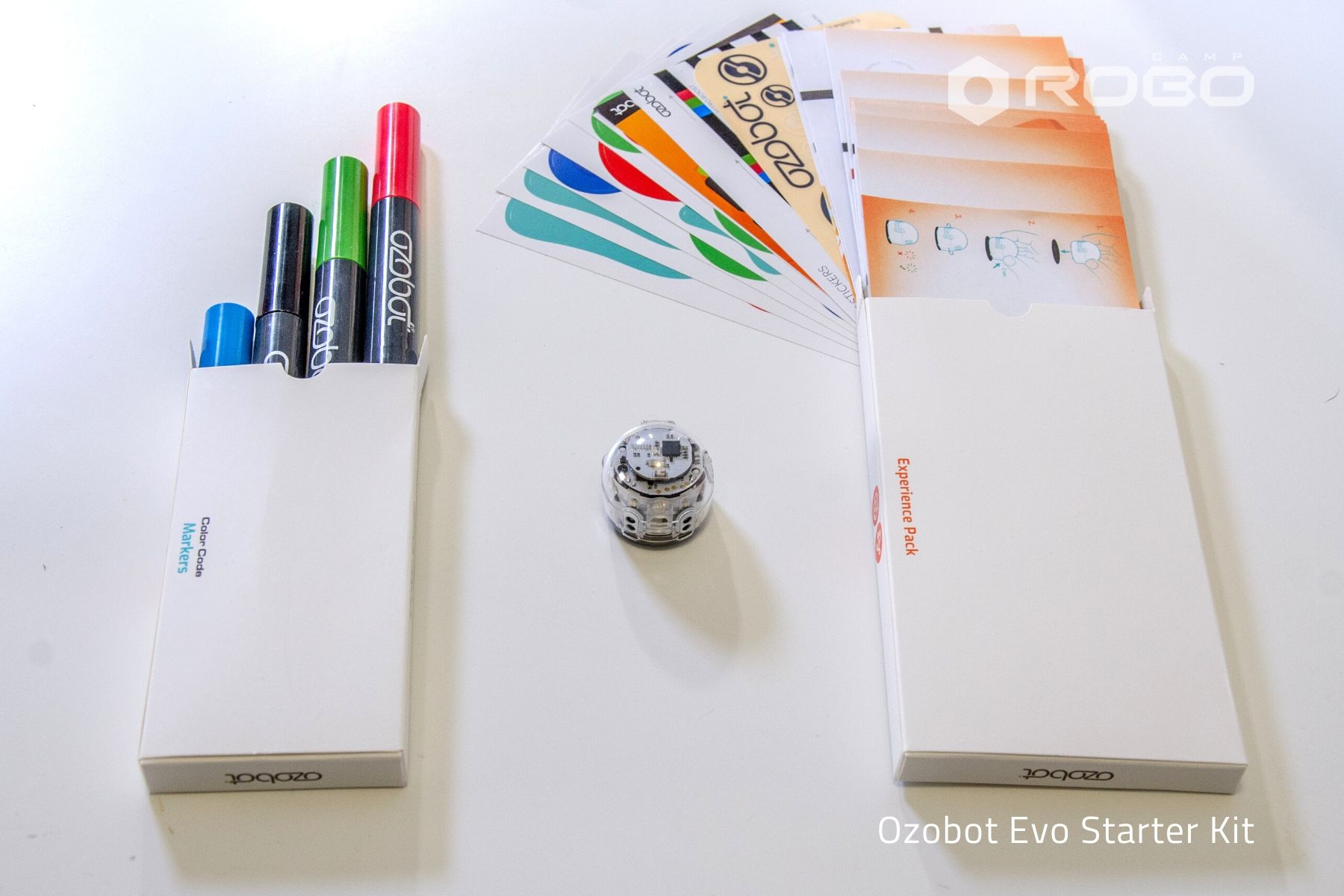
One robot for all schools, subjects, and grades
When it comes to teaching with Ozobot Evo, there’s some good news and some predictable news. Let’s begin with the cream.
Dear educators, you will be glad to know that there’s a lot of official content and tutorials to pave the way for start, full webinars included. Everything related to Ozoblockly is explained: from calibrating your screen to loading the program, even troubleshooting. Helpful content is certainly appreciated by all users, but becomes a necessity when you are a teacher.
Believe me, we know a bit about it, which is why we organize webinars for teachers ourselves. Check them out.
Although starting to teach with Ozobot is smooth and exciting, expect a bumpy ride along the way. Despite a sizable database of ready-to-use lesson plans, you will probably have to adjust them, if not personally create entire lessons from scratch. You can blame the mixed quality of available lessons.
Some of the problems we spotted include:
- explaining a long chunk of code to students, instead of allowing kids to code themselves,
- substituting introduction to the lesson with lengthy online articles,
- impossible lesson time (one lesson was supposed to last 5 x 70 minutes!),
- not enough lessons without Color Codes.
Remember to closely examine the next ready-to-use lesson you plan to conduct with Ozobot.
To be fair, maintaining a high standard and a large number of lesson plans is a problem not only in this case. Almost all companies in educational robotics struggle with this aspect of their product. Unfortunately, this preference of quantity over quality indirectly influences the public perception of educational robotics overall.
Hopefully, the lesson plans will be reviewed and improved over time.
Cost¶
- Ozobot Evo – $99.00
- Evo Classroom Kit 2.0 – $1,200.00
- Washable Color Code Markers – $6.00
Conclusions¶
Ozobot Evo is, without any doubt, an impressive project. The creators’ attention to detail and quality is clearly visible in the product’s core: construction and programming software.
Evo has a big potential to help kids and young teenagers learn basic and advanced coding skills, but because it has so many options, it may prove challenging to use without any additional guidance. The Evo by Ozobot app tries to fill this gap and is somewhat successful, especially for homeschool robotics students and individual users. School teachers can access and use lesson plans. Still, it’s not enough.
Because most of the educational content is concentrated around the flashy Color Codes, a large chunk of Evo’s programming possibilities remains a closed book to many users.
In truth, if you are going to use Ozobots only with Color Codes (which we highly discourage!), you will gain nothing from Evo. Stick to the older model, Ozobot Bit instead.
Moreover, since kids cannot modify the robot construction, they need some additional motivation to keep learning. Lessons with Ozobots should be exceptionally exciting, involve building obstacle courses, immersive stories and interesting tasks. Otherwise, you will soon notice that your students’ lose interest in learning coding with Evo.
For its size, Evo is quite expensive. And it's not universal in use. If you are looking for a complete package solution for school education, one that allows you to organize interesting classes throughout an entire school year, you might be better off choosing LEGO WeDo 2.0.
Then again, if you are combing through educational robots to find a perfect gift for a child, note that Ozobot makes an underwhelming first impression. It’s not immediately approachable like Photon, or humanlike, so don’t count on a wow effect upon unwrapping.
Nevertheless, if you consider yourself inquisitive and determined about learning how to code, you will love Ozobots.
Thanks to their versatility, durability and user-friendliness, Ozobots have dedicated fans all around the globe. Geeks of the educational robotics world love them and we do, too.
For that reason, we will keep our fingers crossed for further improvements of Ozobots.
